We hear it all of the time: “I don’t make any money off of boarding, its a business of love.”
And we as the boarders shake our heads in frustration, wondering how our hard earned money could be useless to the farm owner or manager. How is it not enough? This is insane. This is ludicrous. I pay A TON in board, amiright?
I was one of you. With one horse in active competition status, one horse always for sale, and two retirees (one for physical issues, one for mental), I was writing a fairly hefty check every month to my barn owner. So when a water trough was found dirty, or the wrong blanket was put on a horse, I got frustrated. And in true Carleigh fashion, when I got frustrated, I made it clear.
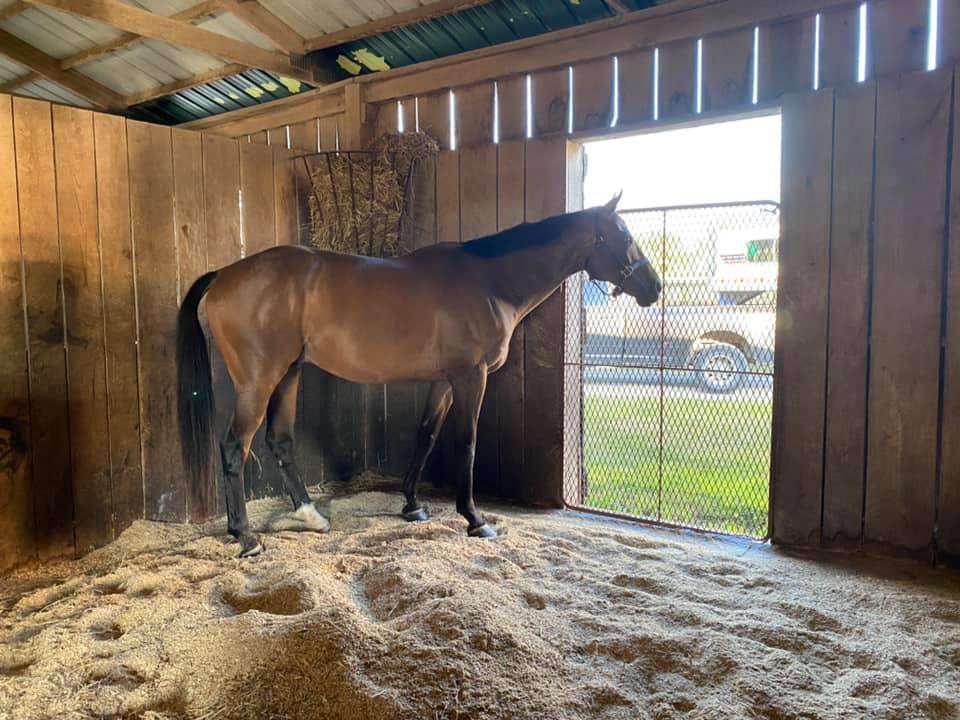
What was I even paying for? Why was I even paying it? Where was all of this money going? He was getting rich, and I wasn’t getting what I wanted or thought I needed!
And then, I opened my own farm…
And what I learned was truly eye-opening, alarming, and possibly even horrifying. Well, horrifying enough to make me consider why I even did it. Often.
Because as an equine scientist, a skill set of mine is writing a budget for a grant. And as an equine enthusiast, I have now utilized this budgeting to explain the business of boarding. I have shared this wisdom with many to alert them to the costs associated with their horse, and after a quite long hiatus from blogging, I felt motivated to share it with you as well.
So, here goes.
Feed:
Lets start simple. Our horses have to eat, right? And if they’re anything like my barn full of thoroughbreds, they’re not only going to eat a lot, but they’re going to eat it often. I am lucky to live in Lexington Kentucky where two of the premier feed mills in the world exist right here in town, and therefore the cost of excellent grain is quite cheap due to the lack of additional shipping. The average horse in my barn eats between 4-6 lbs. of grain twice a day, and I won’t even add on their supplements, as that will complicated matters, and usually paid for in addition to standard board.
$16/50 lb. bag = $0.32/lb x 8lb/day = $2.56/day = $76.80/month/horse
Hay:
Now lets not forget. While grain is important, its the hay that our prized possessions acquire which keeps them health, happy, ulcer-free, and content. Right? Now, this aspect of budgeting is going to vary tremendously depending on the state you live in, access to a flatbed (ie, delivery vs. non delivery), and what content of hay that you are feeding. But, I will utilize our method as an example, and acknowledge that this will be MUCH more expensive if you live in Wellington, FL, and far cheaper if you’re feeding a straight grass hay out in Buffalo, WY. My rule of thumb is 1/4 bale of hay per feeding, two feedings per day. We feed a orchard grass/alfalfa mix, and I am lucky to not only own a flatbed trailer to transport it, but also own a husband who seemingly likes bucking hay. Win/Win.
$8/square bale x 1/2 bale/day = $4/day = $120/month/horse
But lets not forget that we also require hay outside during these winter months, and storage of these bales is an additional cost. It also requires the ability to transport/move/unload/place these heavier bales, leading to additional costs for tractors, but we’ll leave that alone for now!
$30/round bale x 1bale/week/4 horses = $30/horse
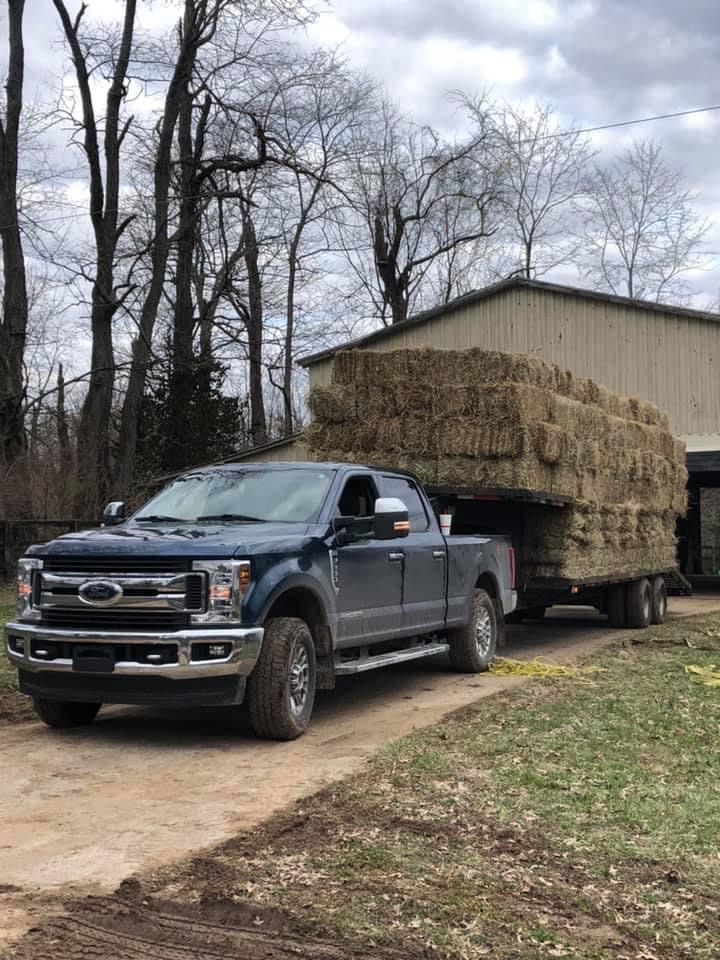
Bedding:
The majority of horses within my care are competition horses, and therefore we tend to stable them for extended periods of time. This means that I need quality bedding to let them lay their belly-filled heads down on. Bedding is an interesting thing to budget, because it depends on facility access, equine allergies, nearness to sawmill, and ability to receive large quantities of bedding at a time. I have utilized pelleted bedding when I didn’t have a sawdust shed ($$$$), but am currently lucky enough to have a storage facility to stock large quantities of beautiful pine sawdust from a mill located just a few miles away, which is delivered to the farm whenever I need it. Because of this, bedding is fairly cheap for me, but still an amount that needs considered.
$400/load / 1 load/month / 10 stalls = $40/month/horse
Utilities:
Now let us not forget that Fluffy needs to wash that hay and grain down with big gulps of clean water, leaving us with utility bills. Additionally, I need light to be able to see the stalls that I am cleaning. Therefore, we need electric and water at the bare minimum of our utilities, while many will add such facility fees like dumpster removal, plowing during snowstorms, and even gas if necessary. But, lets stick to the clean and easy:
$250/month/10 stalls = $25/month/horse
Lease/Mortgage:
These stalls need to exist, and lets be honest – few of us are inheriting the pillared farms here in Central Kentucky. This leaves us with few options: win the lottery, rob a bank, or lease a farm. Trust me, I weighed each of these options carefully, but decided that I do not look good in pinstripes (fattening), and therefore signed the dotted line while buying my lottery ticket daily. Now, just like everything else, a lease will vary depending on the facilities, amenities, and size of farm. And if we’re lucky enough to buy, its safe to assume that a mortgage is going to be considerable for a farm that is large enough to support boarding. For simplicity sake, we will stick to an “easy” number to break down, and realize that this could increase tremendously for the bigger operations!
$2500/month/10 stalls = $250/month/horse
Staff:
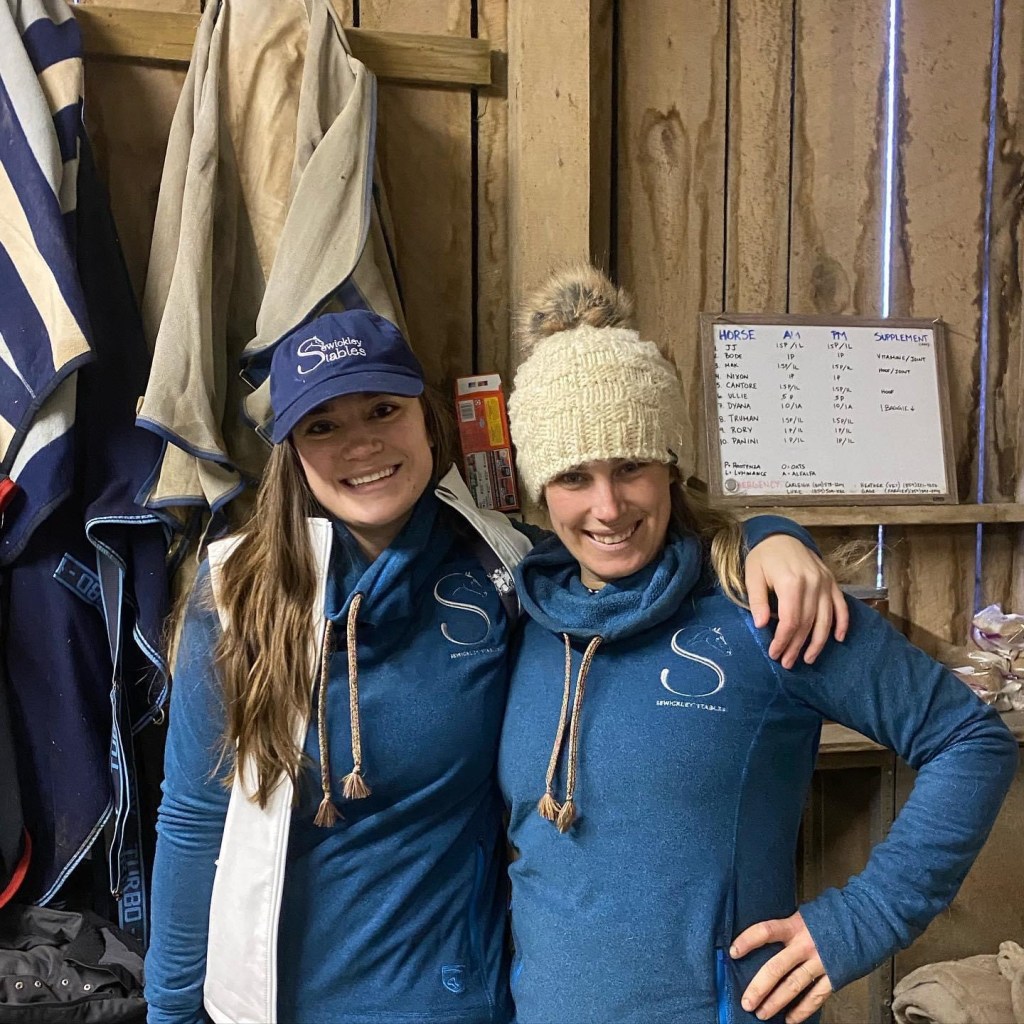
I started this business thinking that I could do it all. I mucked the stalls, I shoveled the bedding. I fixed the fence, and I scrubbed the troughs. I then went to my actual job, researched equine infertility, wrote manuscripts, attended conferences, and taught undergraduates about breeding. And the I went back to my farm and saddled up 1, 2, 3, 4, and even 5 horses. It was too much, and after a year of “free labor” I hired on some help. Now, because it is just 10 stalls, I was able to keep this part-time, and therefore save considerably. But labor is labor, and comes with a whole other set of worms.
$40/day/10 stalls = $4/day/horse = $120/month/horse
Miscellaneous:
Now, this list could go on and on and on. Insurance is approximately $1000/year. Fence boards need replaced. The tractor needs diesel. The arena needs footing. Gravel needs laid, and we need shovels and rakes to do so. Pitchforks break, and buckets need snaps. I could go on and on about the nickel and dime replacements that my farm has required, and then could add the $300 tractor tire and the $2,000 worth of electric fencing that I utilized while we fixed the 4 plank.
$500/month/10 stalls = $50/month/horse
So, lets put a price on the basics…
The cost of one horse for one month:
- Grain: $76.80
- Hay: $150
- Bedding: $40
- Utilities: $25
- Lease/Mortgage: $250
- Staff: $120
- Miscellaneous: $50
- OVERALL: $710.80
When I wrote down this budget, I sent my previous barn owner a text message of apology, realizing that he had been boarding my horses at a loss. I also realized just how much he must have abhorred my incessant text messages about broken boards and lack of bedding, realizing that I was nowhere close to paying him enough.
As the owner/manager of my own farm, I am now “one of those” people who read the ISO posts for cheap board with a shake of the head. And trust me, I get it. I was one of you. I owned a horse while in graduate school, and could never have afforded to board at a facility that charged me $750/month. I also acknowledge that there are some ways to decrease this cost. Do self care (less staff), do pasture board (no bedding), own a quarter horse (less feed), or offer to work off some of the cost of the farm.
But at the end of the day, the mortgage will still need to be paid, the water will still need to run, and the horse will still need to be fed. With hopefully an additional $20 to pay for that bottle of wine that will need to be opened when the texts messages start to roll in from the owners in their care.
So the next time that you write that board check, or post that ISO ad, ask yourself what exactly your horse costs. Utilize some simple math and demand of yourself the tough questions. Understanding the business of boarding will not only improve your decision making into where you want your horse to live, but what is considered reasonable to ask. And at the end of that day, realize that minimal profit is being made on this laborous lifestyle, indicating that the majority of us are doing it for the love of the horse.
And for additional questions, please feel free to visit http://www.sewickleystables.com for more information on what we do, who we board, and what we offer to you!

The struggle has been real.
We are in the midst of a global pandemic, horse shows are getting cancelled or indefinitely postponed, and mayhem seems to surround us.
And yet, the one thing that seems to be getting us through 2020 is the same thing that we can rely on through any ordeal – our horses.
For those of us who compete, it was a moment in time to take a step back and fix problem spots. For those of us who utilize this as a hobby, it was a moment in time to look inwards at our horsemanship and attempt to improve it. And for those of us who sell, it was a moment to look outside of the box and find a way to better rehome, market, and place our equine companions.
I was like so many of you. In March, I had one of the nicest thoroughbreds that I had ever ridden sitting in my barn. He was fully retrained, ready to compete, and entered in his first recognized event at Beginner Novice– only to have our world crumble underneath us. And I watched as a pandemic chipped into my profit margin, all the while noticing that my options to advertise him became limited.
I stopped jumping due to the fear of ending up in the hospital. I stopped advertising due to the concern of having strangers get injured while trying my 4 year old. And I stopped trying to sell this horse, unsure if anyone was even shopping in this pandemic.

But I also watched as racetracks shut down, horses required homes, and trainers struggled to keep a roof over their heads. It was the cruelest of twists –
Right as we needed to rehome, sell, and market the most – our marketing scheme had turned against us.
In previous years, my go-to had always been the various sales pages offered on Facebook. Facebook groups like “OTTB Connect,” “Event Horses For Sale,” and “Area 8 Eventers” had always been an easy source of advertising for me, free to post on, and had a massive outreach in their hundreds of thousands of followers. And yet, when I went to upload the information about my carefully sourced, beautifully produced, and meticulously advertised horses – I found myself in “Facebook Jail.” Facebook had decided that animal sales were no longer allowed on their platform. A method to reduce animal trafficking, had actually led to a perilous place for the very people trying to keep these animals safe.
And with it, it created a punishment not only for me, but my reselling program Sewickley Stables, and specifically the horses within it.
And we all do this for simply that – the horses.
ENTER: OTTB United.
I logged onto social media the other morning and saw that all of my buddies within the aftercare world were posting, sharing, and applauding this new app that had been developed just for people like us.
- The people who do this for the love of the breed.
- The people laboring around the backside of racetracks, just trying to make certain that every horse got a fair shake.
- And the people who put countless hours, weeks, months, and years in producing these horses into the second careers that we know they can thrive in.

This Facebook lockdown had caused thoroughbred advocates to realize that their ability to advertise their horses could mean actual life or death for at-risk horses, not to mention financial ruin if the resellers could not sell. A horse rehomed/sold left a stall open for a horse at risk.
This app was not only developed by true thoroughbred enthusiasts to be used by actual thoroughbred enthusiasts, but also gives back to various thoroughbred aftercare organizations, including the Retired Racehorse Project (RRP), After the Finish Line, and others.
So in knowing that I could trust the source, I quickly joined its ranks, and this is what I found:
For free, you can peruse all horse ads. You can evaluate each horse based on a variety of filters, including age, location, skill level, and height. And you can access race records, pedigrees, videos, and pictures of each horse of interest.
Additionally, You can also shop on the app for appropriate shippers, allowing for the east coast to meet the west. For free, you could find a horse, mediate the purchase of that horse, and then get him home.
And if you wanted to access even more information? For only $4.99/month, you could upgrade to Premium, which was an obvious necessity for me. This allowed me to post pictures, videos, and facts about each of the sales horses in my barn. And not only that, but you were then linked back to social media to share these listings – utilizing the loophole of a 3rd party website to advertise, market, and promote these amazing creatures in our care on the very social media platform that inhibited us. You can correspond with the various buyers to interact, allowing for a messenger board all of its own.
And for me? This was awesome. As someone who has just started her own facility (shout out Sewickley Stables) and selling three magnificent OTTBs (should out Judge Johnny, Flatten, and Panini), this was the missing link to my life. The whipped cream to my hot chocolate. The fried onions to my green bean casserole.
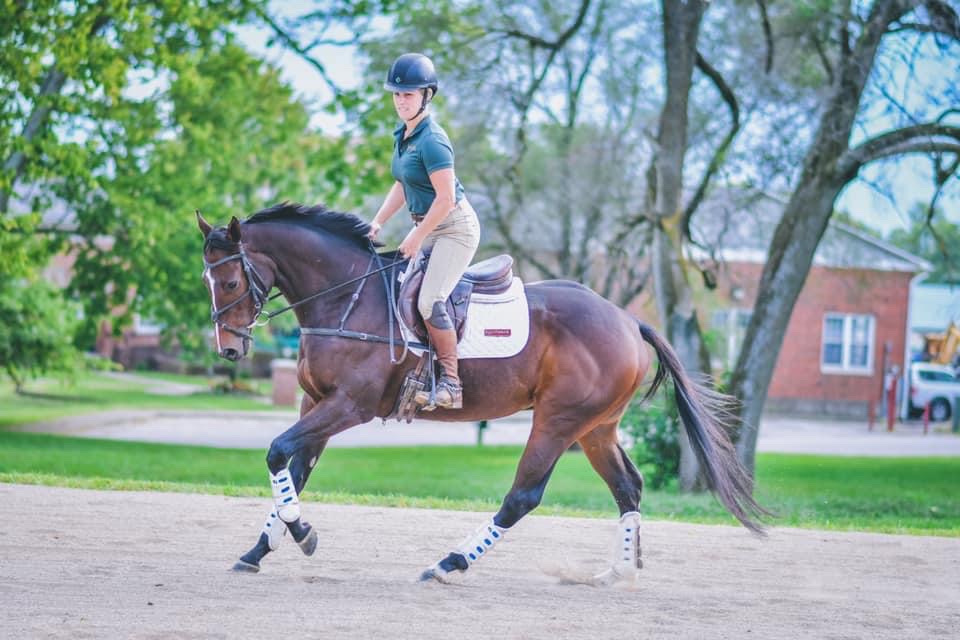
I can’t say enough good things about this app and was even more intrigued to discover that this is just the soft launch. With little to no quirks, and a powerful herd of OTTB enthusiasts behind it, I can only imagine what the actual launch will afford us.
An easy way to shop. An inexpensive way to market. And a superb way to connect.
If you, or someone you know, is looking for their next upper level mount, a horse to teach lessons on, or just a statuesque creature in the pasture behind your house – then look no further.
OTTB United is just that place.

A week ago today, I received a message that made my heart sink.
After months, if not years, of preparation, I was told that my entry to the long format Training Three Day event was actually rejected. It was only a matter of hours before the jogs, and with that simple message, my singular goal of 2019 was crushed.
Now, to be clear, I knew this could happen. I had spent 2017 preparing for the T3D only to have a similar thing happen. Because in 2017, you needed 4 MER’s (Minimum Eligibility’s) to qualify for the T3D. This included a dressage test with a score lower than 50, a stadium test with no more than 16 penalties, and a XC test with no stop. And in 2017, I ended the year with 3 MERs, and a stupid stop on XC.
I was devasted.
I spent 2018 injured, and hit 2019 ready to regroup. I ran around a bog at Midsouth Horse Trials in June to my 4th MER and thought “Yes, finally. I am in.” With that 4th MER, I also realized I was qualified for the move up to preliminary level, but knew that with an upcoming wedding and a less than ready brain, I would plan to stick to the training level. I wanted another few MERs before I made that jump, and knew that a goal of a T3D was the perfect plan to route that move up.

Running around a bog. Photo by Xpress Photo
I wanted to be ready. I wanted to be prepared. I wanted to be safe.
But with AEC’s taking place in exchange for Kentucky Classique, and a bank account that limited my ability to travel, I had limited time to get ready for that T3D.
So I ran around another clean in September with a tough course at Flying Cross HT, my 5th MER. And I left that event thinking that I finally felt totally prepared. My demons were gone, my riding was there, and I felt like training level was a breeze. I had been competing at this level on this horse since 2015. We now had 5 MER’s. And I suddenly felt like preliminary was within reach, albeit with a long arm.

Another clean Training Level, and my 5th MER. Photo by Vics Pics
My trainer and I discussed my plan to that ultimate level. It made sense to run around the T3D in October, and then maybe follow this with the elusive Modified in Virginia if I could afford it. This would end my 2019 on a brave note, with a preliminary move up in 2020 if all went to plan.
Flash forward a few weeks, and I found out that the rules had changed. According to April 2019, you now needed 3 MERs and 1 MER with a 20….within the last 24 months. I had 2 MERs within 24 months, an additional at 25 months, and a 4th at 27. And although my entry had initially been accepted, ride times had been given, PTO time taken off, and steeplechase lessons been taken, my goal was vanished.
I won’t go into the intricate details of my emails, phone calls, and visits with both USEF and USEA to clarify the rules that were written in 3 different ways on 3 different websites. And I won’t go into the tears and heart break that this brought me.
Because what I want to focus on is the safety.
Immediately after I was told that my entry was not accepted for the T3D, the show secretary graciously reached out to me and offered to get me into the regular horse trial. She didn’t want my weekend to be a bust, and knew how little I had the time and money to compete.
And then she asked me: Did I want to go training? Or did I want to run around preliminary?
And my eyes grew wide. My mouth grew tense. And my fingers clenched.
Because we as a sport claim that we are getting safer. That our rules are there to protect the horses and riders. The research is being done to improve the fences and the safety equipment. And the data is going into improving all of the above.
We claim to change the sport to better it. And yet in this very moment, I was being told that the rules had failed. I was told that I could not enter an event at the very level that I had been competently competing at for almost 5 years, but that I was deemed “safe” by USEA/USEF standards to jump 4″ higher.
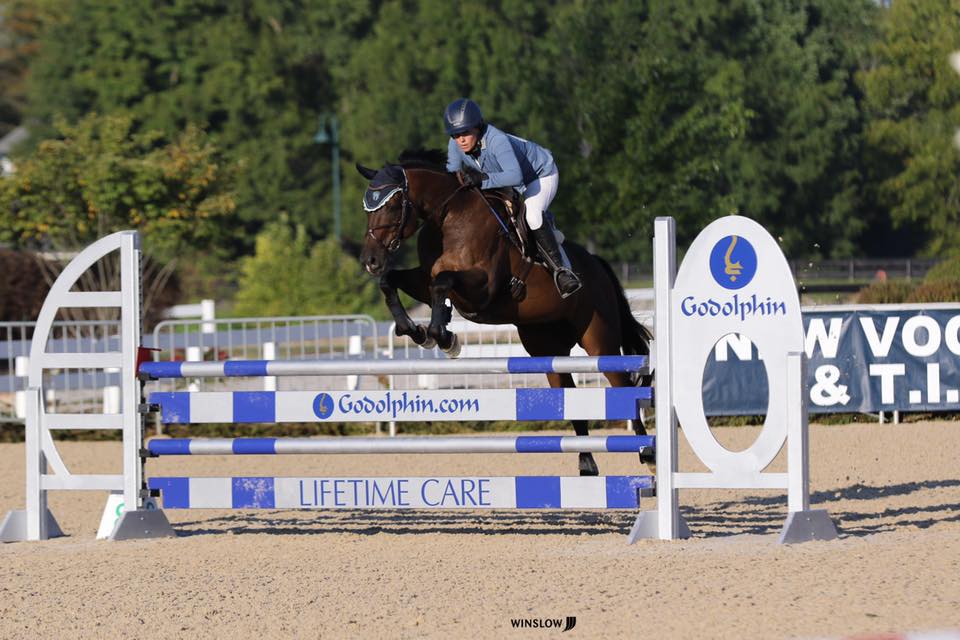
Happily jumping 1.10m in the arena. Not so happy outside. Photo by Winslow.
I walked the course of the regular training, and noticed that the open training course was 95% the same as the T3D – a course that I knew I was fully capably of tackling. And I looked left and right, focusing on the green numbers to see if I felt any differently. To see if I felt braver. If I felt ready. And I knew that I was not.
Had I been braver, or maybe stupider, I could have said yes. I could have ran out of the preliminary start box with my middle finger up and a war cry. I could have kicked around the first 10 fences and pulled up when I felt inadequate. Or I could have kept kicking and eventually fallen. Eventually hit the ground. Eventually got hurt. Or even died.
Because with the invention of social media, the risk is always present. I read of the three deaths within the last few months and gasped. I watched as my friends and my fellow riders shattered pelvises and spines. I stared as the Facebook statuses of another horse rotating over a non collapsible fence were published. And I watched us send prayers, well-meant messages, and even dollars by GoFundMe’s.
And each time, I felt sick. Unsure of why I even did this sport. Unsure of if I was willing to take the risk.
I refused to be pressured into something that I deemed MYSELF unready for. I refused to be another statistic to the masses of people who deem us both insane and unethical. I refuse to be the reason that the comment section on Eventing Nation lit up for the millionth time after a rider fall. Where the haters screamed that we were inhumane, while we responded that we did what we loved. What the horses loved.
That we try to do what’s best for our animals and our students, while USEA, USEF, and FEI create the rules to hold us accountable to those measures.
Only this time they didn’t.
This time, the rules changed in a way that made no sense.
And I have to wonder why? Why are we limiting access to those long format events that we declare are so essential to the education of our young competitors who never got to experience them. People like me who studied day in and day out to learn about the vet box, to learn about the phases of Roads and Tracks. The people who asked their trainer for a lesson on properly jogging a horse, and brought out their old rusty watch to relearn minute markers.
We used to claim that the T3D was the perfect move up for preliminary because you encountered a maxed XC course, a difficult dressage test, and a championship stadium course. It was a way to learn of our history while preparing for our future, and in doing so, we broadened our continuing education of the sport we loved so much.
But while I was deemed ready for that move up to preliminary, in the same sentence I was told that I was not deemed worthy of the T3D. The fact that this message was sent the day of jogs was just the icing on the cake.
Yes, our governing bodies screwed up. Maybe my entry should have never been accepted in the first place (it was). Maybe my rule book should have been updated in May 2019 instead of January 2019 (it was not). Maybe USEA should have deleted their website page from February 2019 where they had the qualifications described in a way with which I was qualified (they had not). And maybe USEF should have responded to my emails sent 5 weeks ago for clarification (they did not).
Maybe I should have never entered an event at a level I felt 100% capable of completing and instead took the risk and competed at the next level that I was not ready for.
Or maybe I should just stop entering at all.
I want to continue to love eventing. I want to continue to defend eventing. I want to be able to scream to the naysayers that we are doing whats best for our horses, and whats best for our riders.
So I propose a few things.
- The rules need to make sense. The rules need to allow our members to do events that they are capable of while still increasing entries and membership retainment. Let our members experience these long format events that we keep saying are so far lost. Let the requirements to get into them be minimal if the courses are not going to be harder. Let the education increase.
- The rules need to only change for one reason: safety. You should not be able to qualify to move a level up and not be allowed to compete at the same height that you have been at for years. This was truly the aspect of this weekend that frustrated me the most. It made absolutely no sense. And it was dangerous.
- Additionally, they need to go into action on January 1st of that calendar year and stay the same for the following 12 months. We have seen this happen with bits, we have seen this happen with faults. If we are to decide on new rules, than they need to be simple to find, simple to follow, and simple to enact.
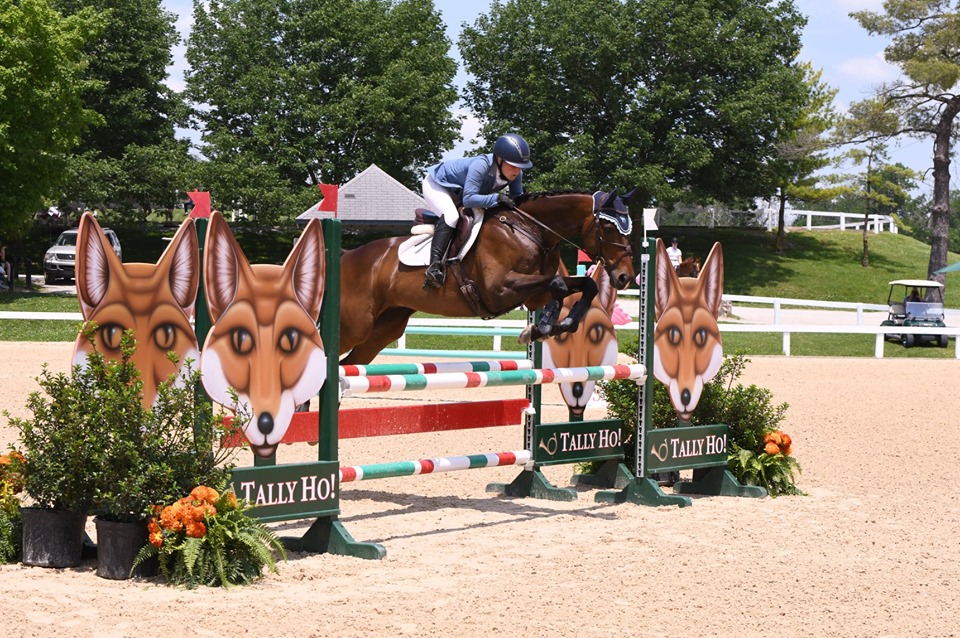
I am so saddened that my educational opportunity got taken away from me. But I know that I still left that start box on Saturday prepared. I still left that start box safe. And I still crossed the finish flags with a huge smile on my face.
But maybe I’m more saddened because I can no longer trust my governing bodies as the ones with their heads screwed on straight, I can only trust myself. I myself made the safe decision. I myself decided that I was unready to move up. I myself kept my wits about me throughout the drama.
I am also sad because I can no longer say that one day I will do a T3D, because now my goals have circumvented it. There are so few offered every year as it is, and they are not inexpensive to be entered in. By the time the next one that I can afford rolls around, I will have hopefully already moved up to modified and then possibly preliminary. But this will happen when I am fully ready. When I deem myself safe.
A goal that was one of mine for 3 years now is gone, an educational opportunity lost. But in its place, I received an education into the ropes, hoops, political BS, and inadequacy of the very people we trust to govern us. That needs to change. Conversations need to be had. And rules need to be in place to keep us safe.
Only then will this sport be one worth fighting for. Worth competing in. Worth loving. I want to love it, and I know you do too.

Loving this sport. Photo by Vic’s Pics

I love thoroughbreds.
I love watching them gallop at seemingly g-Force type speeds whether it is over a manicured racetrack, a hilly paddock, or the laneways of a 5* event.
I love breeding them. The miticulous veterinary care and painstaking attention to detail. The veterinary science and research that goes into every ultrasound, therapeutic, and cover. And then that tiny black dot on the screen and another fist bump across the machine.

I love foaling them. The 2am phone calls leading to a scramble for Carhartts and car keys. A race against the clock as you cruise 60mph around the farm. And then the quick presentation of a white leg followed by a brown muzzle. The wiping of amniotic fluid from nostrils and holding a knee under ribs to sit sternal.
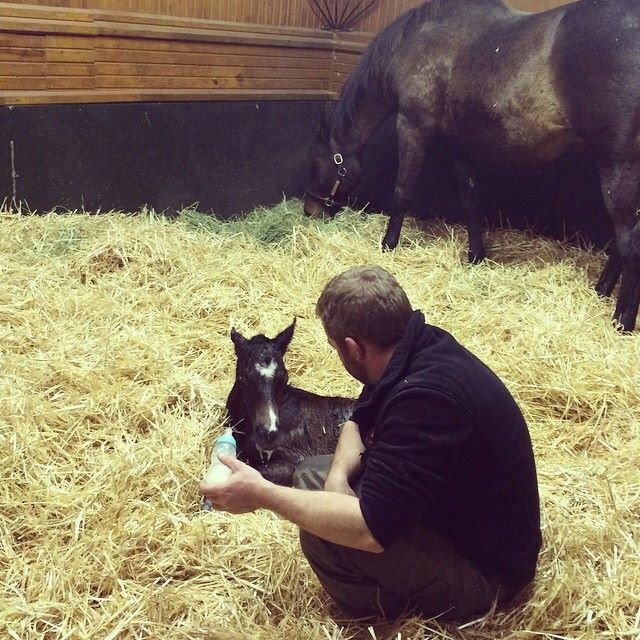
I love watching them walk within 30 minutes.
And run within a day.
I love watching them grow. They stand with the same presence at 60 days as they do at 6 years. They learn about social hierarchy as quickly as they learn about sweet feed. They assess the farrier monthly with the same inquisitive mind as they assess the Labrador retriever sharing their dinner.

I love prepping them. 75 days of beautification. Their coats glisten and their muscles ripple, every fiber of which shows what good management, good nutrition, and good exercise can do. Not drugs. Not steroids. No gimmick, nothing skipped.

I love watching them sell. Staring up at the screen as the 0’s accumulate and the smiles widen. A yearling who has never been off of its birth place standing calmly and proudly inside a crazed ring full of men and women snapping photos and raising hands. Showcasing that same inquisitive sensible nature that was born into them.
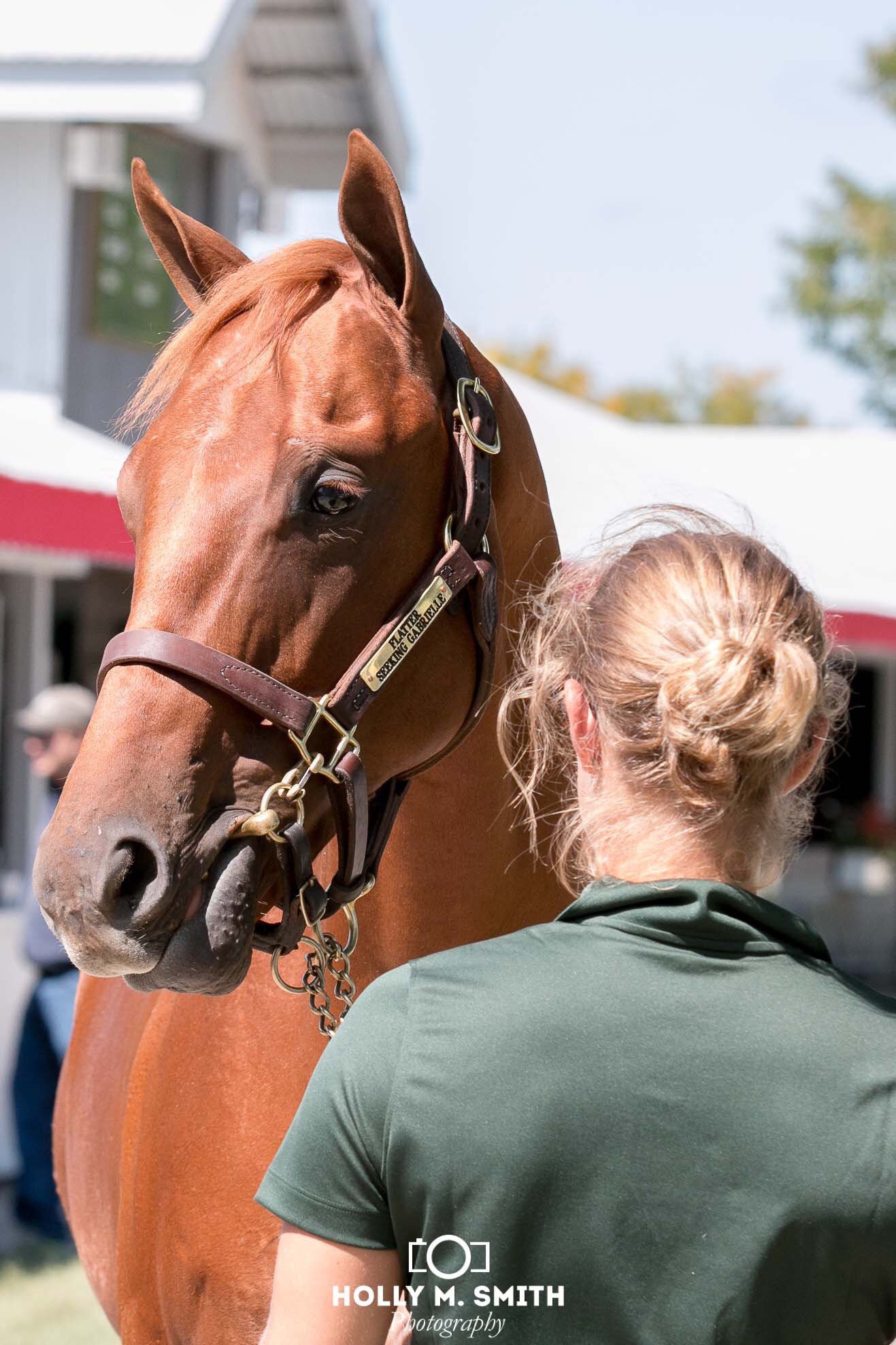
I love watching them be broke. The first surcingle, their first girth. They turn their head and nip at the first paddock booted foot that applies pressure to their barrel. The first time they recognize the partnership with the rider sitting upon them as they trot the hills and realize their are more speeds besides 0 and 60.

I love watching their first race. Will they feel that heart and competitive drive of their mother, father, and the 50 generations before them? Will they dig deep and find that 2nd, 3rd, and 4th gear? Will they break clean and finish strong? Will their ears be up as they break free from the group and open to their stride as they open the distance between them and the rest?

I love watching their last race. I love watching the grooms who have poured every ounce of sweat and tears into mixing grain and massaging muscles hug their necks for the last time as they load them onto my trailer. Some to return to the very farm where they took their first breath. Some to return to the very breeding shed where they were made. Others to the arena behind my barn. To learn how to gallop all over again, this time towards a XC fence. Their inquisitiveness responding to water, ditches, and banks.

I love tucking them into their stalls on a cold winter night and awakening them for their first horse show. Braided and gleaming, new muscles on different places. Ready for the next adventure.
I love thoroughbreds.
Thoroughbreds have kept me fed. Thoroughbreds have sheltered me. Thoroughbreds have picked me up at my lowest of lows, and saved my life when I didn’t think a life was worth living. Thoroughbreds have gotten me out of bed after disastrous nights, and put me to sleep after long and draining days.

Media would have you believe that thoroughbreds are surrounded by greed, money, and drugs. But those aren’t the thoroughbreds I know. Mine are surrounded by hard working men and women, steady hands and booted feet, pasture mates and babysitters and most of all, love.
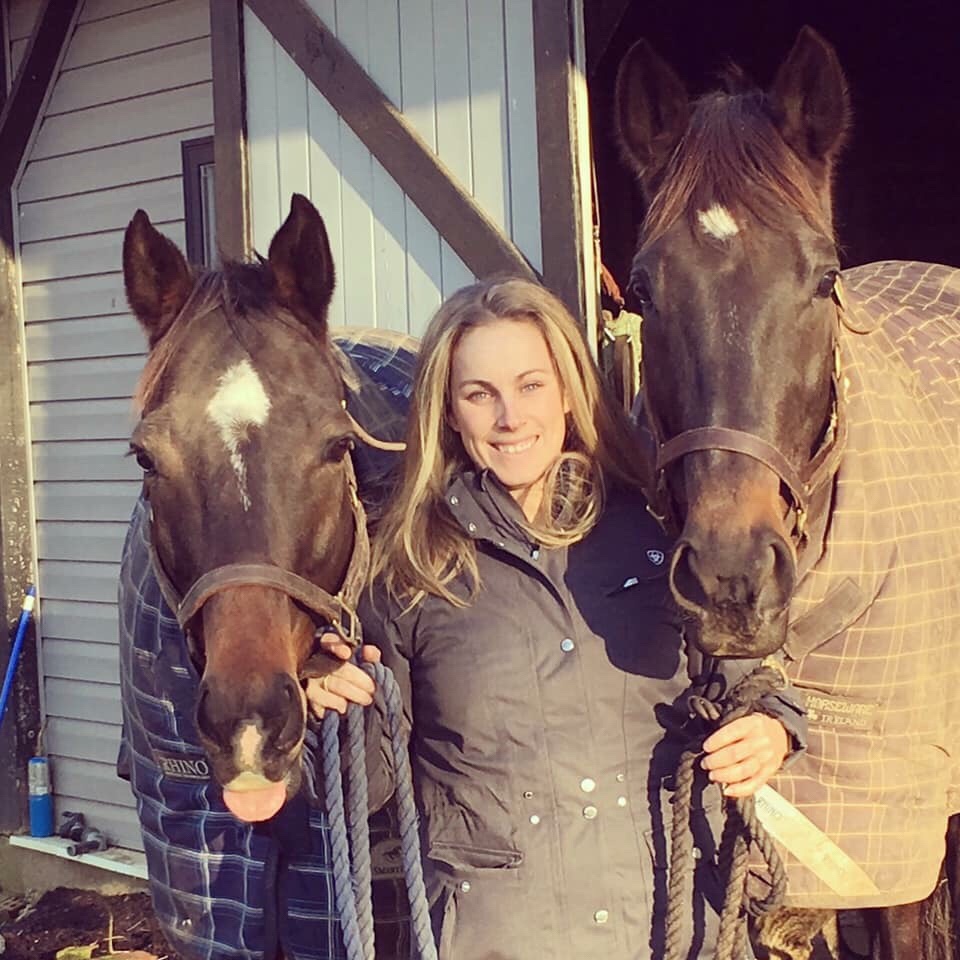

A few weeks ago, I presented some of my research at the Society for Theriogenology’s annual conference in Savannah, GA.
I was speaking on a topic I am both super passionate about as well as quite knowledgeable-the inflammatory response to bacterial infections during pregnancy in the horse. It is the reason I went to graduate school in the first place. It combines my three passions: immunology, reproduction, and horses. And I knew I was prepared.
I was in the competitive category, having been selected as one of the top abstracts of the conference. And I got on that stage and started my talk. I knew that I knew my data. I had done the entire experiment myself, from the lab work to the statistics, and I could answer any question.
But halfway through my presentation, I heard myself slip. I had stammered over a word choice. Two slides later, and I forgot to explain my x and y axis.
But, I rallied. I regrouped. I kept going. I answered the tough questions received and walked off the stage to a fist pump from my fellow lab mate and a hug from my intern.
But the minute that the applause ended, I started analyzing.
It was good, but had it been great? It was well done, but had it been perfect?
Instead of focusing on the 99.9% that had gone well, I felt stuck. I shook my head at myself for having tripped over that word. I smacked my leg at realizing that I could have described that graph more coherently.
And instead of being thrilled at a great presentation on a massive stage, I felt frustrated.
I refused to hear the congratulations. I refused to let their compliments sink in. And instead, I focused on the negative.
Less than a day later, I found out that I won the entire competition.

I went up on the stage, accepted the applause and the check that came with it, smiled for approximately thirteen seconds, and then immediately sank into a funk.
Yes, I had won. But I hadn’t been perfect. I didn’t feel it was deserved. It could have been better. I could have been better.
There is something to be said for a personality like mine. One that fixates on the minute negative instead of celebrating the majority of good. It carries from work, to sport. From hobby to my occupation.
And I feel it trickle towards everything from my friendships to my riding.
I can leave a stadium round where every single rail stayed up and still be upset that I chipped to the 8th.
I can walk off of double clean XC where my horse was happy and healthy and still fixate on his hesitation to the water.

And I can sit and pause over videos, acknowledging a tail swish or an ear pin more than a fluid lateral movement or cadenced gait.
We as equestrians are asked to pay attention to details. It’s engrained in us from such a young age. Stalls are picked immaculately. White breeches stay starched and clean. Bandages without wrinkles and tails without sawdust.
We are scored by the movement or the jump so that we can break down the good and the bad. And we use these scores to improve upon what we err’d.
And yet, at times, it’s not healthy.
At times, we need to find happiness in the overall picture.

To look at a ride as a cohesive unit, instead of 20 different transitions, 3 different gaits, and 2 halts.
To look at a XC course as a round over 6 minutes instead of 20 obstacles and two lines.
And to look at our time spent with our horses as years in total and not one bad ride, one injured limb, or one bad show.
The fixation on the minutiae needs replaced with the overwhelming feeling of accomplishing a goal; no matter how small it is.
Relishing in the walk to that podium. Feeling praise in that fist bump. And holding on for an extra second or two to that hug from a friend.

Only then can we truly appreciate the journey that is life. And especially life in this sport.
I know I gave a damn good talk. I know I had a great XC school. I know I improved my dressage test.
And I know I am going to try to work on fixating on the joy of the bigger picture. Are you?
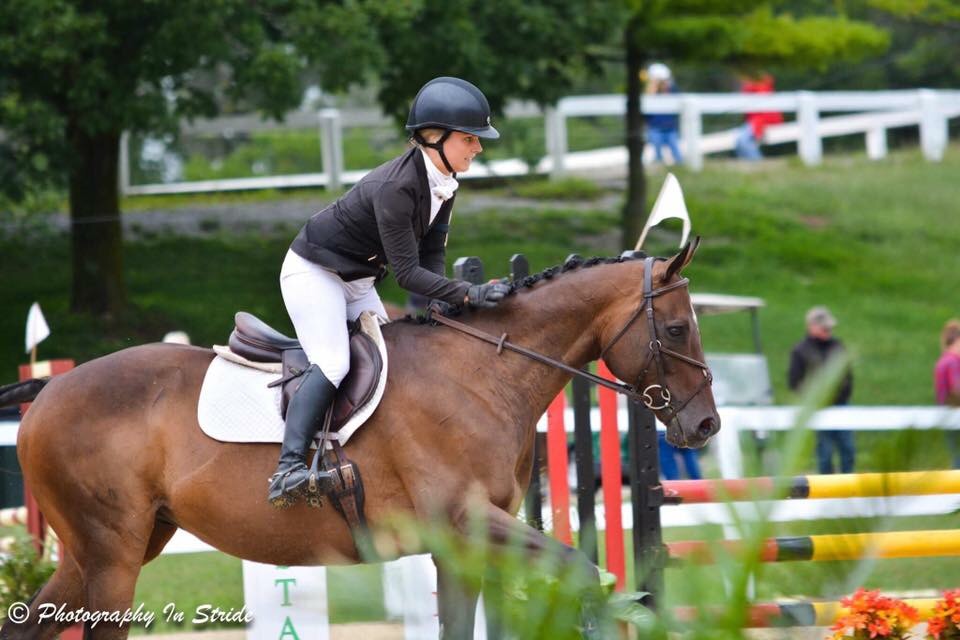

I posted a video of me flatting a fresh off the track thoroughbred yesterday and was immediately messaged by a stranger telling me that my stirrups were uneven.

New baby OTTB
Two years ago, I posted a sales ad only to be asked by a potential buyer why I look down the entire ride.
And 4 years ago, I posted a photo of my toughest horse in jest of a particularly hard ride, only to have a massage therapist tell me he was obviously in pain.

And each time, I just wonder why I even share my life at all.
Don’t get me wrong, I know that this blog and my social media which accompany it are partly to blame. My actions are part of the problem.
I also know that in order to place, sell, and locate as many horses as I do that I need this social media.
I try to share the highs and lows. I am the first person to admit my faults and flaws. I am not the best rider. I am not the best retrainer. I am not the best blogger. And I sure as hell am not the best person.
But I open up my life and my experiences to so many because of the occasional message of happiness. The teenager who tells me that they look up to me. The college aged kid who says that my podcast taught her something. The young rider who comes up to me at a show and asks what it takes to get a PhD.
And in exchange, I share.
But rarely have I asked for critique on my position, or suggestions on my horses health.
Because I have an amazing trainer. And a superb veterinarian. An unreal farrier. A moody husband. And a crew of feisty and fierce friends.

I go to these ladies when I need horse advice. And for my wedding.
Trust me, I get enough of their solicited advice.
And most of the time, I even pay for it (some in beer).
But we as equestrians find some sick happiness in picking apart our rides. We rank the best ridden fence on Eventing Nation. We ask fellow equestrians to Judge My Ride. We submit videos for viewing and pictures for editing, but at the end of the day, all of these things are chosen by the only person who’s opinion matters: our own.

We love criticism, and we readily access it.
Just think-we vie for ribbons, but we race to the stack of tests to see what the judges comments were.
We seek out ratings, but regard the raters written criticism.
But the difference between that and social media? In each of those scenarios, we chose to be critiqued.
No one chooses to open their Facebook messages to be picked apart. No one asks for a random person to chime in on what they perceived as a beautiful, cute, or funny post.
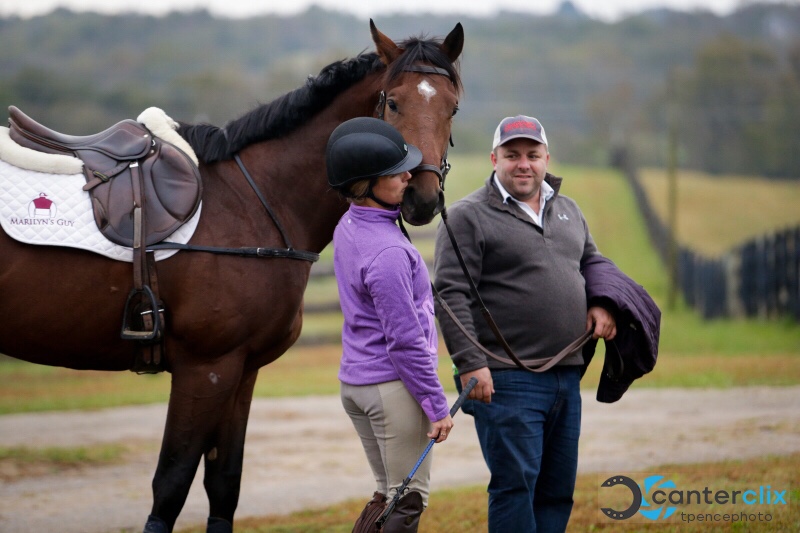
And no one should have to.
So why don’t we all as a group agree to leave the unsolicited advice in the back of our minds, where it belongs. Judge the things that are selected to be judged and answer the questions that are beseeching for advice.
But upon stumbling upon a photo, video, or blog that is simply a show of happiness, sadness, or somewhere in the middle, leave the words of wisdom alone. Lift your fellow rider up, and sympathize when they are down. Give a high five in person or a ❤️ over the inter webs, and leave the advice to those who are getting paid the big bucks.
Trust me, we all could use that.

I came off the cross country course at fence 7.
My horse felt great in the warm up. My horse felt amazing fence 1-6. Big tables, ascending stairs, a massive brush angled line to a double brush. Tick, tick, tick. He jumped out of stride. He jumped well. I rode with efficiency. I rode well.
Until I didn’t.
A hanging log caught us off guard, and with it, a 20.
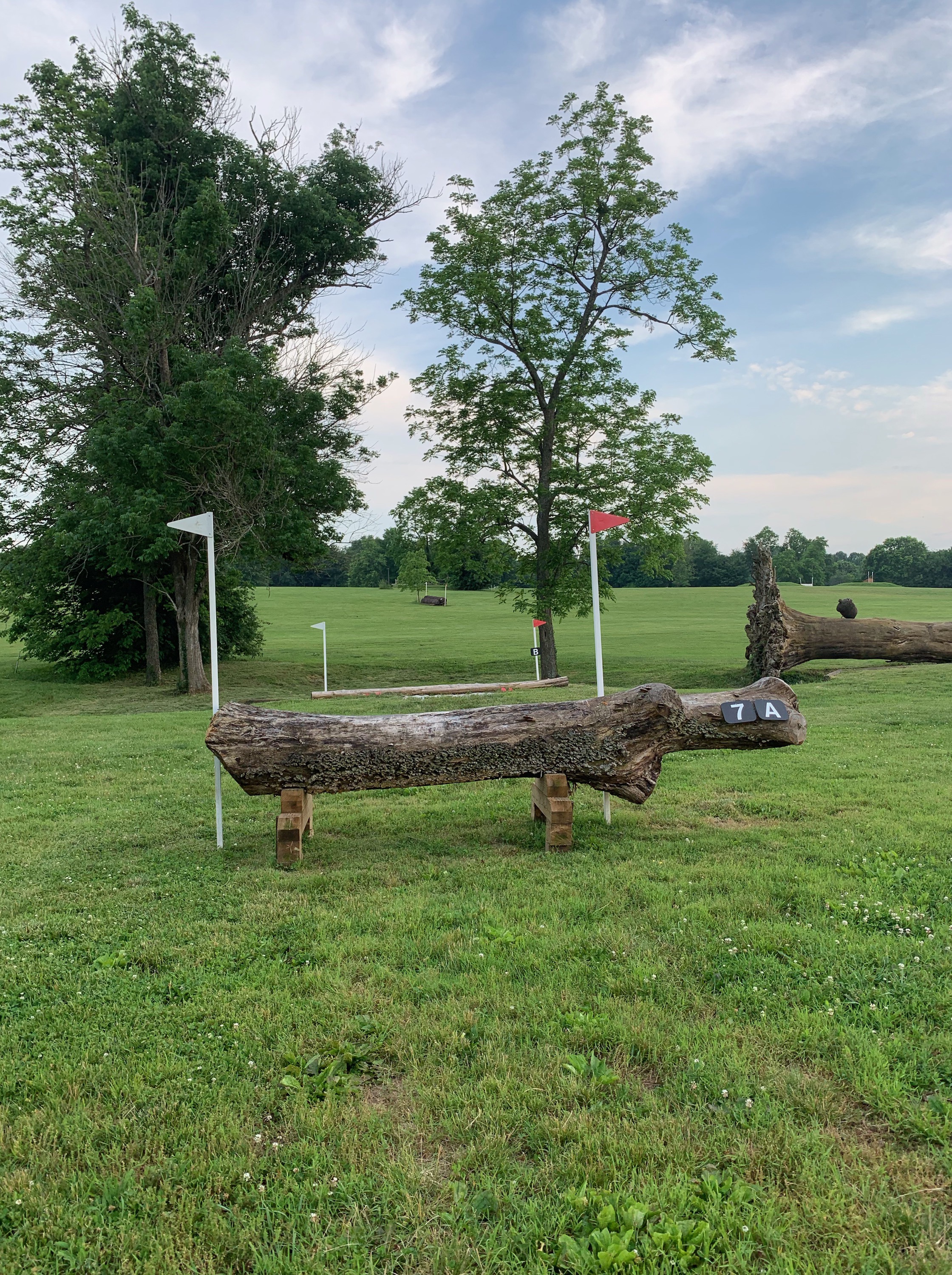
I represented and popped over, only to have the bank 3 strides later stump him.
And when I went back for a redo, I heard a jump judge say I was eliminated. She proclaimed I had had 3 stops. I had not, and this was confirmed by my barn owner, but what was the point in the argument? So off I went, heading back to the trailers just shrugging my shoulders.
Immediately my phone beeped. Was I ok? Was I safe? Was I upset?
And strangely, I was.
I have realized in my short 33 years how insignificant these shows truly are. I have realized why I am in this sport. And I have come to terms with taking blame and placing blame.
Moreso, I have come to enjoy this sport for the joy it brings me and not the pain.

I loaded my horse back onto the trailer with a pat and hauled him the short 3 miles home. I swung up on my other beast for a quick flat. And then I texted my friend Leah, asking if she was still on the show grounds.
Because while I was attempting to come back in the world of eventing, my friend Courtney was climbing towards a milestone of her own. A bronze medal in dressage. On a horse she had made herself.
And my weekend had ended in defeat, but my soul was still intact. I knew I had to be there. I knew that my weekend had ended right as hers had begun. And I knew how much this weekend meant to her.
So I picked myself up off the Whoa Is Me floor, cracked open a beer, and meandered to the dark side.
And it was amazing.
I know now that I don’t do these competitions for my own self gluttony. The $3 ribbon might hang proudly in my closet, but it is the memories I make which hold true to my mind. The friends standing at the finish flags. The fiancé holding an iPhone firmly as he videos a dressage test. And the popping of a champagne cork as we toast to a goal obtained and a dream made.

Today, it wasn’t my dream.
Today, it wasn’t my champagne cork.
But today, we toasted as high.

To milestones achieved. To goals obtained. But moreso, to friendships made. To the highs and lows with a good group surrounding you. Those people who can laugh at your mistakes while applauding your triumphs.
That is why we do this. That is the fun in the game. And that is the smile on my face at the end of the day.
Today wasn’t my day. Today was hers. And I’m so ok with that.
Congratulations Courtney, you deserve every minute of it.
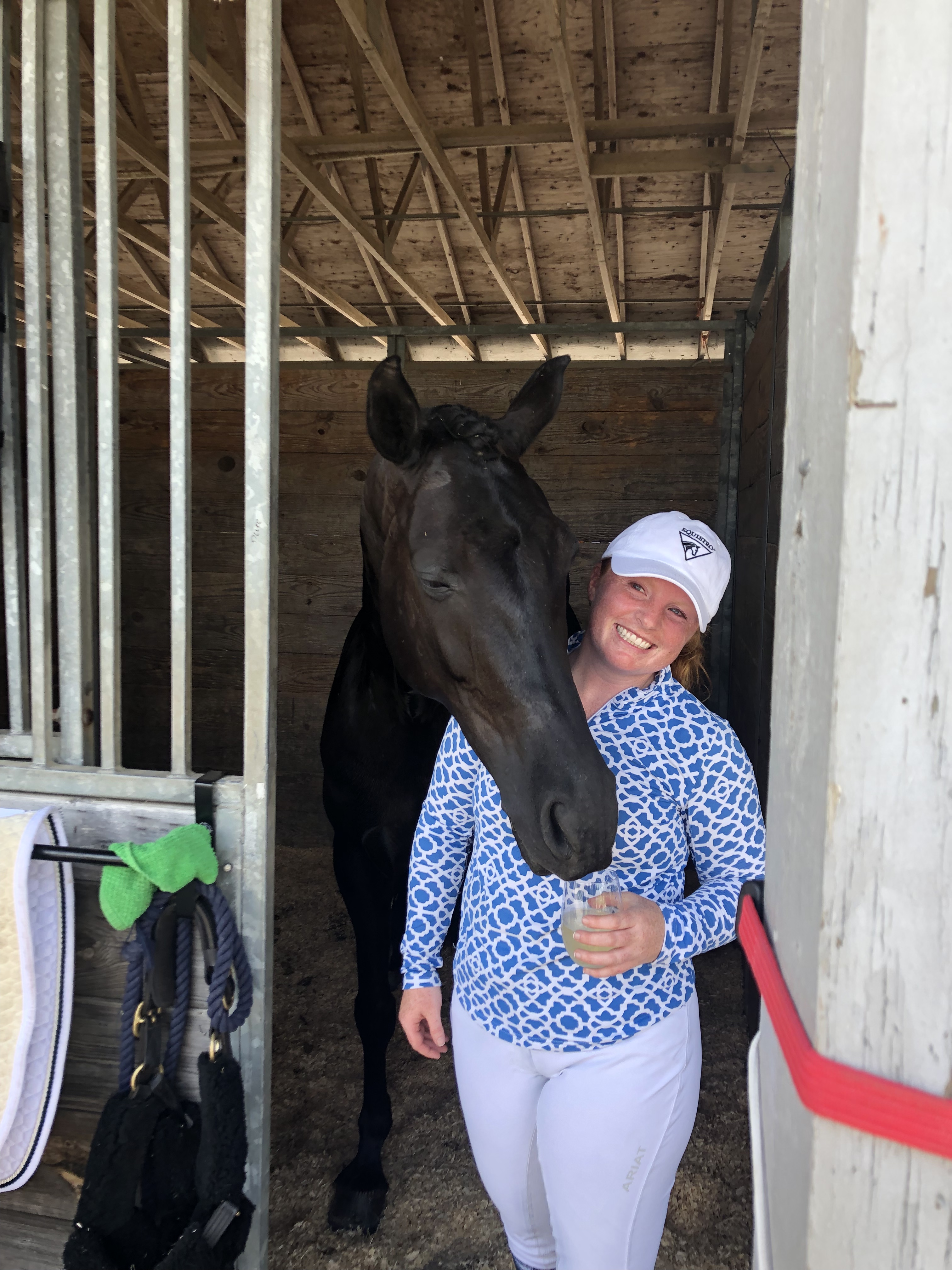
The Lasix debate has reached its fever pitch, and I have avoided it thus far. Backed off by accusations that I am merely a scientist and not a race trainer, I have remained fairly quiet.
But. I am a horsemen. I am a scientist. And maybe those two things needs combined for an opinion.
An opinion based on fact. Not anecdote. Not legend. And more importantly, not propaganda.
Furosemide (Lasix) is a drug used to prevent or at least minimize outward bleeding of horses in strenuous work. This bleeding is called epistaxis, and mostly occurs when a horse suffers from grade 4 Exercise-Induced Pulmonary Hemorrhage (EIPH). There are three lower grades (1-3) which can be detected by endoscopy, but are not outwardly noted as a horse who bleeds.
While 55% of thoroughbred racehorses experience that grade 1-3 EIPH, it is known that a mere 4% of actually experience epistaxis or outwardly bleed (Preston et al (2015)).
And yet a staggering 93% of thoroughbred racehorses in North America race on Lasix.
4% bleed. 55% have the disease. 93% are treated.
This doesn’t add up.
Industry would lead us to believe that the banning of Lasix will lead to an outcry from PETA for animal welfare because SO MANY horses will be bleeding in public. And yet science disagrees, showing that very few actually will.
Not to mention, industry has filled our minds with this idea that Lasix saves horses. If we don’t use it, horses lungs will fill with blood and drop dead. They tell us that it is good animal welfare to give the horses these drugs and minimize their pain and suffering. Without the drug, we will be neglecting animals. With the drug, we will be helping them.
And all I can say is… What?
Veterinary medicine is a practice built on diagnosing and treating a disease, not individual symptoms.
And Lasix? Lasix is the treatment of a symptom, not a disease. Lasix masks the symptom of bleeding, but doesn’t treat the disease of EIPH. Not to mention, it doesn’t truly mask the symptom of bleeding all that well, and has been shown to decreases only 1 EIPH grade score in only 68% of horses (Sullivan et al. (2015) / Hinchcliff et al. (2009)).
So it works in 68% of the 55% of horses which suffer from the disease. Ok, then it’s benefiting 37.4% of racehorses.
Then why are 93% getting it?
Maybe more interesting is our other option in minimizing EIPH score.
Nasal strips (Geor et al (2001)/ Kindig et al. (1985)). Pretty damned effective and a whole lot safer.
One is a caustic diuretic and the other a strip applied to the skin to open airways. And yet the one we are grasping onto? The drug.
And what does treat the condition of EIPH? Not Lasix, not Flair strips, not withholding water or even administering vodka.
Rest. Simple rest.
In other countries, this is already implemented. A horse bleeds, and is withheld from training or racing from a range of 30-180 days. Bleeds a second time? Longer. And while these other racing locales implement a treatment for the disease, we continue to treat the symptom.
It should be acknowledged that the administration of Lasix doesn’t come without detriment. As a diuretic, we see horses come out of races dropped in weight and dehydrated. We see 6f sprints devastate condition and leave horses struggling to bounce back.
Horseman would say it’s simply a side effect of this life saving drug. Science would disagree as it has shown that this improvement in performance is due more because of its weight-loss effect as a diuretic than due to its minimizing the effects of that EIPH (Zawadzkas et al (2006).
And what does this do? Minimizes how often these horses can train. The average thoroughbred runs every 30-45 days, and this has been accepted as the time needed for recovery. But is it? If we remove this diuretic from our common arsenal and find our horses coming out of races in better condition, will we then see a horse who can run more often? Say every 3 weeks instead of 5.
This should encourage everyone to pause and think. More starts per year equal more races filled. More purses earned. Happier trainers, happier owners, happier track owners, and even an appeased handicapper.
We argue that horsemen should be making these decisions, because they are the ones truly assessing the horses, but are they making them for the right reasons? Do we want Lasix to treat EIPH, or to act as a diuretic and performance enhancer (Gross et al. (1999)? The horseman argue it’s for that (few and far between) horse that bleeds. The policy makers argue that its to protect PR for that (few and far between) horse that bleeds. And science would argue it’s not even that effective at one (minimizing EIPH), and yet pretty damn great at the other (increasing weight loss).
So if we put the horse first, it shouldn’t be used for either.
A disease which is over exaggerated into its detriment to the horse. A drug which masks a symptom instead of treating a disease. And a weaving and winding propaganda pitch from an industry that refuses to change.
Do I think Lasix caused the breakdowns in California? Heck no. We have shown time and time again that it improves performance, and doesn’t mask pain, and yet has become the topic of argument.
Should we still focus on the real issues leading to breakdowns? Yes. But also, we should utilize this crossroad as an impetus to make real change. Change that can affect and save our industry for the decades and centuries to come.
I am pro-horse. I am also pro-science. And at this point in time, those two things need to be at the head of this conversation. Not handicapping. Not money, greed, or propaganda.
By putting the horse first, we conquer so many battles.
We improve their health and thereby increase their ability to run.
We slash PETA and their argument that we don’t care.
And we have a sport that we can get back behind supporting and scream to the masses of our passion and love of these horses.
But until we ban Lasix, we can do none of the above. A drug that the rest of the world doesn’t need. A drug that we as Americans are clutching to with our fingertips as we dangle from the cliff our sport is falling off of. A drug that isn’t even that great at its sales pitch. And a drug that is harming our horses recovery and health after the races they run.
The conversation into what it does and why is over. The conversation into how to get it out of racing has begun. And the conversation into how this will change breeding, training, and racing needs to begin. Let’s start talking.
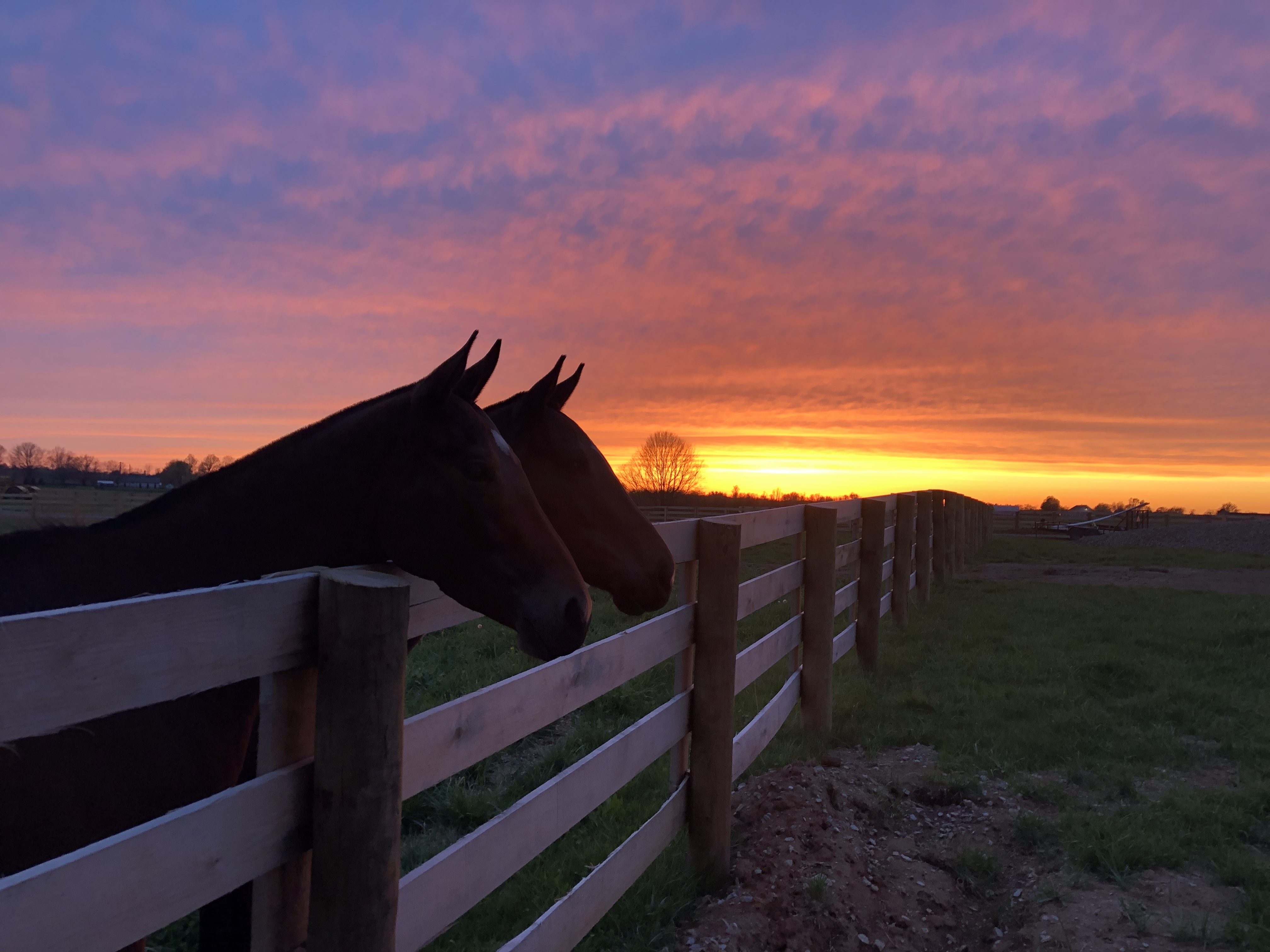
1. Preston, S. et al. Descriptive analysis of longitudinal endoscopy for exercise-induced pulmonary haemorrhage in Thoroughbred racehorses training and racing at the Hong Kong Jockey Club. Equine Vet J. 2015 May;47(3):366-71
2. Sullivan, S. et al. A systematic review and meta-analysis of the efficacy of furosemide for exercise-induced pulmonary haemorrhage in Thoroughbred and Standardbred racehorses. Equine Vet J. 2015 May;47(3):341-9
3. Hinchcliff, K. et al. Efficacy of furosemide for prevention of exercise-induced pulmonary hemorrhage in Thoroughbred racehorses. J Am Vet Med Assoc. 2009 Jul 1;235(1):76-82
4. Geor, R. et al. Effects of an external nasal strip and frusemide on pulmonary haemorrhage in Thoroughbreds following high-intensity exercise. Equine Vet J. 2001 Nov;33(6):577-84.
5. Zawadzkas, X. et al. Is improved high speed performance following frusemide administration due to diuresis-induced weight loss or reduced severity of exercise-induced pulmonary haemorrhage?Equine Vet J Suppl. 2006 Aug;(36):291-3.
6. Kindig, C. et al. Efficacy of nasal strip and furosemide in mitigating EIPH in Thoroughbred horses. J Appl Physiol (1985). 2001 Sep;91(3):1396-400.
7. Gross, D. et al. Effect of furosemide on performance of Thoroughbreds racing in the United States and Canada.J Am Vet Med Assoc. 1999 Sep 1;215(5):670-5.

For the past three years, I have tried to get down South for some spring training.
Two years ago, I ran out of money.
Last year, I ran out of time.
And this year, life happened.
Each time, I hang my head and resign myself to longer road hacks in the freezing cold while the arena sheens with ice. Each time, I throw the heavy weight on my mount while shoving hand warmers in my gloves. And each time, I admit that I will not be ready for that first event in April.
And I get so frustrated.
Frustrated at myself, frustrated at life. Frustrated with the consequences of my decisions, and frustrated that I feel alone in this predicament. I watch videos of 18 year olds who are funded by mom and dad galloping in the Ocala sunshine. I see photos of amateur horses under the tutelage of 5* riders for months on end. I watch as others progress up the levels while I feel myself remaining stagnant. And I feel jealousy, anger, pain, abandonment. Alone and like no one else understands. Even though in my head, I know so many are worse off than I and that no ones path is perfect.
And I just don’t know how to change it. Alter that route. Reroute the outcome.
A couple of months ago, I sat talking to the mother of a friend about life. It had nothing to do with horses, but simply family, friends, and everything in between. The last few months had been filled with what felt like landmines in life, and I just didn’t understand why these catastrophic things were always within my life. When would the illnesses end? When would everyone I loved be healthy? When would everyone I loved be happy?
I lament about how life was unfair, how it was tougher on some more than others. How I felt at times like the bricks were stacked against me, and that I felt like there was no other option than halting and staring, or pivoting away.
And she told me something that stuck.
I can’t change the cards I have been dealt, but I can change how I play them.
I can’t control my situation in its entirety, but my situation surely isn’t the worst, and I am far from the worst case scenarios.
So I brought this idea into my lesson last week, when my trainer had finally arrived back from sunny Aiken.
She asked if I was entered in Spring Bay, and I said no. Again, life would get in the way. My best friend was getting married that weekend, and standing beside Amy on the biggest day of her life certainly trumped running around the first event of the year.

Been standing by this girl since rust breeches were in style…
She asked if I would be able to get to Aiken in April or May and I said that I hoped so, but that I needed to start my research projects before I would know. The life of a scientist is tricky, and moreso, the life of a researcher who studies equine reproduction is unpredictable. I wouldn’t know if my mares were foaling until merely hours before they did. But, my impact on the future of equine reproduction was more important than schooling some XC fences.

Equine Reproduction Research
So we talked. About how little of a spring season I may have, and what this could mean.
More importantly, how this wasn’t the end of the world, and how I could still have a great 2019 without it.
Because during our talk, I realized something.
Every year, I get so frustrated with myself that I try to come out hard in the spring. I enter all of the shows, and demand that we be ready to “move up” in some way or another. Whether it is finally tackling that elusive preliminary event, or getting to 1.20m in the jumpers. Whether it shifts to that bronze medal, or even just in doing a hunter show. It’s always changing, and its never worked.
I burn out by August, and I usually end up with a September and October that amount to nothing.
The months when the weather is the best. When my horse is his most fit. When I am my most ready.

When we are feeling good.
And more importantly, six months away from now. A time the has time.
I don’t need Ocala or Aiken to get to the fall. I don’t need an indoor arena to prep for those shows. I don’t need excessive money to keep kicking along through the summer.
Six months away sounds plausible. Six months of long summer days, intense lessons when I can afford them, and smaller prep shows.
And maybe more importantly, six months of fun.
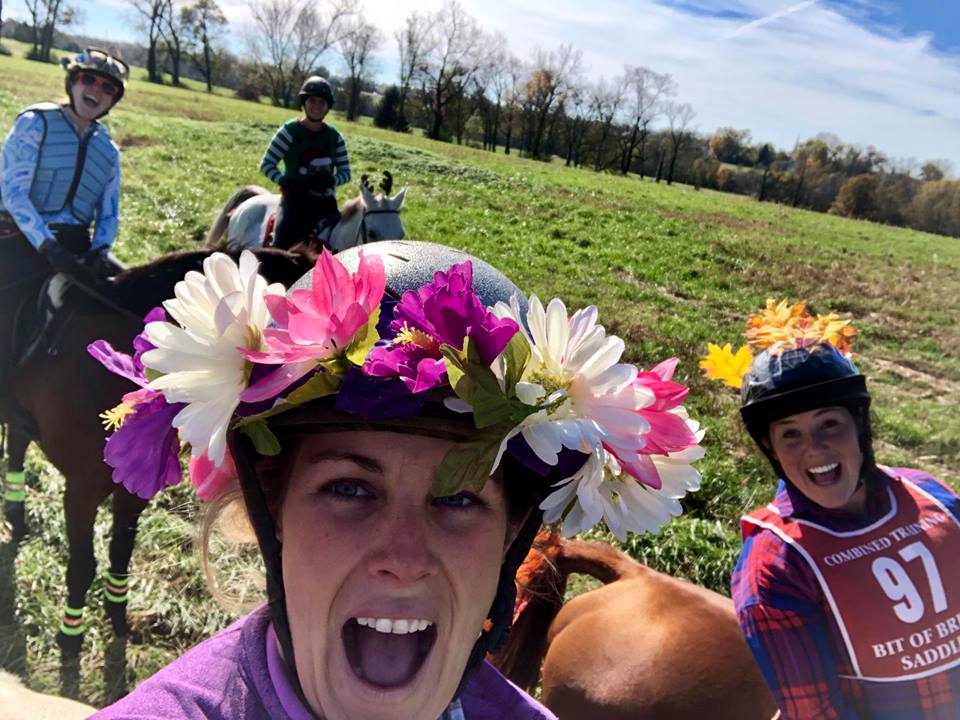
Costume class of a hunter pace? Sign me up.
Fun that sounds exciting. Six months of hacks with my girlfriends. Six months of soul soothing flats sound great. And six months of exciting XC schools with my best friend Mak sounds even better.
We can’t avoid life.
We can’t demand more time.
And we can’t control the next big expense that pops up.
But we can control our outlook on these things. We can choose to not be defeated and keep our heads up. We can reroute the roads that lead to there and redo the plans. We can readjust our expectations and rerun the list to get there.
More importantly, we can decide to keep it fun.
And at the end of the day, isn’t that what got us all to this place? A love of the creatures that we chose as partners and the time we spend with them. The thrill of galloping down to a big table. 1, 2, 3 and over. A perfect leg yield. A square halt. Finally getting that change, and finally keeping that left leg on.

1, 2, 3 and over. Photo by JJ Sillman.
But also, finally squeezing in that hack as the sun sets. Getting to the barn at dusk when it is quietest and you are all alone. The only noise being horses happily munching on timothy and happy breaths of cool spring air.
That should be enough. And that doesn’t cost any money, will be there at any time, and is so essential to life.

There are countless stories swirling the internet, voicing the hundreds of different opinions on this subject.
We have heard Arthur Hancock ask for his industry to limit race day medication.
We have heard PETA call for an end to all of racing.
And we have heard countless others call for a full assessment of that fickle track.
The 22nd horse broke down yesterday, after one of only a handful of days since training resumed. I read that singular news line and my body just collapsed. The breath escaped from my lungs and my chin sank to my chest.
Because yet again, we are caught doing too little. Yet again, we are caught unprepared. Yet again, we find ourselves on the defensive.
And any good coach will tell you that the best place to be is with the ball in your own court. We don’t have that.
And to the dismay of so many, it appeared that the Stronach Group tried. They sent out a press release, describing what they were implementing (at only two of their own tracks) in an effort to fix this catastrophe of catastrophic injury. And this is what they outlined:
- Banning the use of Lasix.
- Increasing the ban on legal therapeutic NSAIDS, joint injections, shockwave therapy, and anabolic steroids.
- Complete transparency of all veterinary records.
- Significantly increasing out-of-competition testing.
- Increasing the time required for horses to be on-site prior to a race.
- A substantial investment by The Stronach Group in diagnostic equipment to aid in the early detection of pre-existing conditions.
- Horses in training are only allowed therapeutic medication with a qualified veterinary diagnosis.
I read this, and initially I rolled my eyes.
But then I thought about it and acknowledged that any reform was a decent move towards at least a side conversation.
Because I truly do think that the change in weather played a role in the make up of that one particular track, and that this still needs fully investigated and appraised. Should horses have been doing timed works without any true change? No. Should the track have been opened so soon? No.
But are some of these good points? Sure. And many I can get behind. Many I agree with and have been hoping to see change nation wide.
What I can’t get behind are changes simply to appease the uneducated, and alterations made without data or science to back them up.
And as I lamented of this to a close industry friend, we began to list the things that could actually benefit both ends. The horses, the horsemen, and the entity that is this industry.
Things that need to be within the thinktank for that elusive governing body that we so desperately need. Bullet points that might change the game for the better. Commitments to not only the betterment of animal welfare, but the game itself. And issues that should not be up for discussion.
The trainers, owners, and racetracks should all WANT these things. And if they don’t, then I question their motive for involvement within this business.
1. Medications:
1a: Lasix
Yes, we need to tighten up on medications. Do I think we can wean our industry off of Lasix? Yes. Should we? Yes. Can it be done over one day? No.
So propose a gradual plan. Beginning January 1st, 2020 no Lasix in grades stakes races. Beginning January 1st, 2021, no Lasix in any races. Allow the trainers to transition true bleeders to aftercare locations, or better yet, rest them and regroup like other racing locales do.
1b. Bute:
Do I think bute is causing breakdowns? No. As a competitive rider, I don’t even utilize phenylbutazone in my wheelhouse for the simple fact that I find it quite ineffective in true pain management, and for that turn to flunixin (Banamine). Will it assist a sore horse into some semblance of pain free movement? Yes.
But will it mask a fracture to the point that a lame horse will run sound and simply break? No. Should it be given as often as it has been? No. But that isn’t because of catastrophic injury, but moreso gastrointestinal health.
1c. Joint Injections:
Which leads me to the actual problem: joint injections. The headlines point to oral NSAIDs that don’t truly minimize high pain levels, when the injection of steroids into a joint space actually can. We need to set more stringent limits on how close to a breeze or race a joint injection can be given; and moreso, limits on how OFTEN these injections can be administered. I have read the vet records on these horses and at times wonder how their fetlocks haven’t fused.
If a horse is having steroids placed in its joints monthly, it is ill prepared to run safely.
1d. Osphos:
Finally, Osphos. A therapeutic initially meant for horses struggling with navicular syndrome, it is suddenly being used in young horses in training. And as Dr Larry Bramlage stated, evidence in humans suggests that repeat administration of this substance can delay bone healing and remodeling. This, above all and even moreso than Lasix, should be limited in how often and for what for it is given in our performance horses. A drug so much more powerful than an NSAID, user are astonished at how quickly one injection of this substance can turn a lame horse sound–and that is exactly why it scares me.
2. Whip Rules:
Yes, there needs to be rules on how many times a horse can be struck by the whip and what type of whip is allowed. But at the same time, we also need to educate fans on what exactly whips SHOULD be used for, and the minimal damage that they cause for the horse both mentally and physically. When used correctly, whips are just as much a safety measure themselves as they are a negative in publicity measures. They can be utilized to avoid swerves that can cause horses to slam into one another, and because of that, I believe they are essential. So limit the strokes in the homestretch, but do not propose to take away the ability to carry one.
3. Veterinary Care:
The Stronach Group vows to only allow horses to be receiving medication if under veterinary guidance and diagnosis, and I just have to roll my eyes at this. Trainers are not allowed to inject horses, and heavy fines are already given if even an empty syringe is found in a tack room. So while I agree with the point, I also know just how controlled the backside can be on a good track (which Santa Anita is).
But there is such a thing as bad veterinary work. We have seen it time and time again. Veterinarians make money based on services performed and, at times, drugs administered.
So maybe moreso than regulating just medications, we also force veterinarians to regulate themselves. Explain their treatments. Justify their diagnosis. And put their decisions on the line.
Have them write race certifications. Go over the horse before the race and state on paper that this horse is sound and of the ability to perform. And then hold the veterinarians accountable. If too many horses under a single veterinarian or trainer are vanned off, hold them accountable. Horse can’t race without veterinary permission, just like a broodmare can’t sell without a veterinarian deeming her reproductively fit.
If the individual private veterinarians do not feel comfortable doing so, than the track needs to hire competent veterinarians who do this for them. Their sole job should be to go around to the race entries of the day, feel legs, watch jogs, take temps, and assess overall condition. This might take having 4-5 veterinarians on staff, and I am perfectly fine with that.
4. Strengthen Slaughter Policy:
This is a no brainer to me, but I still feel fright when I see my horses run at particular tracks. If a horse is found at a kill pen within 30 days of training, the last listed trainer and owner should be held accountable. If they can prove a contract was signed and ownership was relinquished, than the listed owner who took the horse and initiated the exchange should be banned from the track. No ifs, no ands, no buts.
We have lowered the number of TB’s who end up at slaughter tremendously. But with the current after care system and environment, there is no excuse for even one horse to land in that pen or one more to need bailed. Utilize TAA. CANTER. Local horsemen. New Vocations or ReRun. Or hell, some euthanasia. The slaughter route needs to be abolished, or we will never earn legitimacy from the public.
5. Drug Testing:
Horses need tested randomly in every race, not just winners or 1-2-3. Testing needs to be done by mass spectrometry, and research needs to be done to properly ensure withdrawal times and then this information needs to be given to trainers due to sensitivity for detection. This needs to be done by licensed laboratories that are blinded to samples.
Trainers and owners need handed stiff penalties for positives ONCE these withdrawal times have been established. And veterinary records taken into consideration when penalties are administered. The case of Masochistic frustrated me beyond belief because everyone was trying to do the right thing, and yet served an unbearable price for it.
At the root of the National Governing Body problem is the drug testing. Each state has different thresholds, different platforms to test, and different rules regarding what is legal and what is not. This leads to nothing but confusion, for horsemen and fans alike, and needs ONE set of rules that are based on fact and pharmacokinetics of the drugs. Not hearsay and prayers.
The best defense is a good offense.
An offense that is eloquent and allocated with facts and data. At this moment, we are so busy backpedaling that we are scared of any change for fear it may change the sport we love so much. But if these past few weeks have showed us anything, it is just how much we need to change to survive.
Yes, things need to change. And not just at Santa Anita or Golden Gate. If Stronach truly wanted credibility, he would enact these changes at all of his tracks, something that I believe may come soon.
But moreso, if we as an industry want credibility, we also need to sit down and think.
About what truly matters.
About what is truly hurting.
About what the general public believes.
About what we as horsemen know.
And moreso, about what the horse deserves.
Because at the end of the day; that is what brought us all in. The love of the horse. And the breath being taken out of your body as you watch that Thoroughbred streak across the ground. Seemingly uninhibited by the cumbersome men surrounding him. Unconcerned by the industry collapsing around him.
We need to protect us. But moreso, we also need to protect them. And we can’t do so by running backwards dodging bullets. Instead, let’s regroup, realign, and mount the best offensive plan possible.
We can afford to lose this battle. But we can’t afford to lose the war. And there’s one hell of a fight ahead of us.

I sat reading the comments under Paulick Reports piece and my eyes just grew wider and wider.
It was a story of an anchor on Sport Illustrated questioning why horse racing was still a thing. With how many deaths it causes – both horse and human – why do we have this sport simply for gambling?
The quote left me saddened. But the comments beneath the post left me angry.
Every single person commented was mad at the reporter.
She didn’t know what she was talking about!
We shouldn’t listen to someone who knew nothing about racing!
Look at football! At boxing! At NASCAR!
And with each comment read, my rage gained. Only that anger wasn’t pointed at Sports Illustrated, or ESPN, or the LA Times, or for once, even PETA.
That rage was turned inward. Towards something I loved. Towards something I admired. Towards something far more internal.
My rage was at my own people. My own industry.
Why do we do this every time something negative comes our way? Why do we deflect instead of defend? We have an entity that is so defendable, and yet we never cite the statistics. We never argue with purpose, or transcend the comments with poise.
Instead, we deflect. We point to other negative images and disgusting ideals. We argue that football players are also injured. That boxers are also left with lingering damage. That NASCAR kills.
But no one was reading that article to hear about the NFL. And no one reading the comments under an article on the Paulick Report doesn’t love racing. Their passion for the sport was obvious, but the target of their point was skewed.
Sports like football have also had their own black marks, and yet they have persisted. And you want to know how?
They have a league.
They have a governing body.
They have a public relations team who’s sole job is not only to put out fires, but to also educate the masses.
The NFL is an entity that now aims to the future instead of arguing the past. They showcase the improvements on helmet construction. The improved concussion policies where players must leave the game to be assessed. Their increase in penalties given for helmet to helmet contact.
All rational progress. Change. Sound bites offered when another trauma is seen. Public relations that leave the fans nodding their heads and thinking, “well, at least we’re trying.”
The public relations that is so key. So necessary. And so lacking in the sport that we all love.
I started this blog because of this dilemma. I saw a lack of outsider knowledge on this beautiful industry. And I knew what it was like to be wary of this sport, and have my eyes opened by transparency.

Because of that, I am blessed and cursed by a large following of non-racing horse lovers. Men and women who have alway thought of the breeding, training, and racing of Thoroughbreds as something dirty. Something compromised. Something tarnished.
And yet I receive messages time and time again about how the transparency of this blog has opened their eyes. Simple stories of small acts of kindness. Stories of breeders falling in love. Owners trying their damndest to save. And farms spending every last nickel and dime of income to secure retirement.
So it came as no surprise to me when my inbox flooded with comments and concerns about the current situation at Santa Anita. Could I answer their questions? Could I inform their naive minds? And more importantly, could I calm their fears?
But I didn’t feel comfortable. I am about as far from Santa Anita as you can get in America, and I have no insider insight. But I at least knew small things.
Like the fact that Santa Anita flew Dr. Mick Peterson out. A colleague and friend from the University of Kentucky, he is the director of our Equine Programs, and he is also the leading research on surfaces. Within days of realizing a problem existed, Mick was there. And that made me feel some calm.
I also knew that the retired track superintendent from yesteryear had come out of retirement just to help. Dennis Moore had spent 30 years working on this specific track, and knew it like the back of his hand. He was there to bring his beloved track back to its former glory, and I was thrilled when that was announced.
And then there was the fact that Santa Anita had closed. Something I had never seen happen in my relatively short tenure within this world without infectious disease. Something that so many considered a move too late – but hindsight is 20/20. To occur before a massive weekend of racing-both for older horses as well as those on the Derby trail. A decision that would lose them more money than I could hope to make in a lifetime. But a decision they committed to, and I applaud them.
But then even moreso, I was privy to the research that is being conducted to both study these breakdowns, as well as predict them. A study by Dr. Laura Kennedy from the University of Kentucky Veterinary Diagnostic Lab who researches the “one bad step” hypothesis. A study by Dr. David Horohov and Dr. Allen Page from the University of Kentucky Gluck Equine Research Center who are attempting to find biomarkers in blood that can predict breakdown. Studies for progress. Studies for improvement. And maybe more importantly, studies that can benefit all breeds of horses, but funded by the thoroughbred industry itself.
And as I wrote these things to the people questioning it, I realized that these are points that the average American wouldn’t have access to. All they are seeing are the 60 second blurbs on NBC. The sound bites on Sports Illustrated. The vitriol of PETA.
Things as simple as a bullet list of what we are doing now. What we have done in the last 10 years. And what we are preparing to do in the future. Change. Progress.
Is it perfect? No. Losing 21 horses in 60 days is devastating – I think we can all agree with that. No one, and I repeat, no one, is taking this lightly. Everyone within this industry is sad. We are scared. We are wary.
But moreso, we should be mad.
We should be mad at ourselves. For letting this bad publicity go unchecked. For reading stories on The BloodHorse and Thoroughbred Daily News and assuming that the average person reads the same. For assuming that this insider knowledge of the situation is broad, and not acknowledging that it is not.
We are not the NFL. We do not have a National governing body, and we desperately need one. I have written of this time and time again, and it is never well received. I am told that a governing body will bring too much regulation. That it will change the sport as we know it. And that those changes will never be for the good.
But if we do not change, we will die.
We can’t keep surviving like this. We can never grow if we do not change. And one of the first things that we need to change is our image. Our ability to handle situations like this current one.
That is going to take a governing body. And maybe more importantly, one hell of a public relations team within it.
Without those things, our sport will disintegrate. With it, we have a hope.
I want to feel hope. I think you all do too.
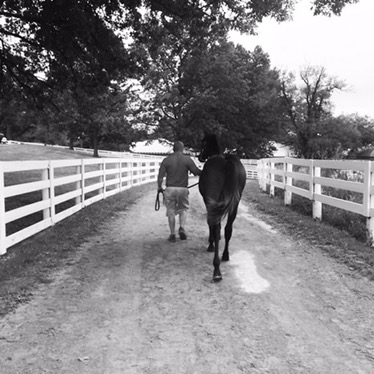

I was speaking to my friend Brooke the other day when the conversation quickly turned to one of our most frequent laments….selling horses.
The process of retraining thoroughbreds is quite near and dear to both of our hearts, and we quickly became friends through our journeys at the Retired Racehorse Projects Thoroughbred Makeover, a process that I have blogged often about.
And we admit that retraining these magnificent creatures has given us purpose, has strengthened our riding, and has opened doors to us that we never knew possible.
But as is life, if we are to continue to pay it forward to numerous other horses with our retraining, we are forced to sell or rehome the majority of those that we lay hands on, which allows us to open a stall and a place for the next steed to benefit from the process.
It is simple math – one in, and one out. But it also is what leads us into our least favorite aspect of the process: The Horse Sale.
And as we lament about the long messages answered, the tire kickers and the overzealous parents, the trials cancelled, and the ridiculous price negotiations, one other part of the process came up which annoyed us both.
The question that was asked time and time again. Over and over.
What exactly are you training him for?
Now Brooke and I both come from diverse worlds – she having grown up in the breed world riding in varying forms of tack, while I ran up the ranks of western disciplines, and added some rodeo, before we both became eventers.

So while we appear as though to be simply eventers now, we are always perturbed and confused by the question. And maybe we are different. Maybe we are unique. Because we are not limited by the discipline in which we actively compete in, and therefore neither are our horses. So we both agreed…
We are not training for a DISCIPLINE.
We are training the horse for LIFE.
I may be considered simply an eventer, but I can guarantee that my exposure of that sales horse to a coop on the cross country course will benefit it in the hunters. I may be schooling dressage today, but I can guarantee you that those haunches in that I just taught this horse will help him in reining. And I may have just gone for a walk hack to check out the sights and scenes while cooling out, but you’ll thank me later if you ever want to do endurance.
And more importantly, I do not take on these horses thinking that they will all fit into my wheelhouse, and that was no more true than when I attempted to make Nixon an eventer that entire first year that he just wanted to dance in the sandbox.

Nixon just wanted to dance. Photo by Melissa Bauer-Herzog
But if you are truly good at this retraining business, and truly in it for the betterment of the horse, than you will quickly realize that the end goal isn’t that the horse fits your hopes and dream, but rather that your lifetime of education around these horses will allow that horse to have hopes and dreams of his own.
And I think of this each time that I get a horse, and begin this process over and over again.
What are the fundamentals? What can I teach this horse that is important?
And not important for eventing, or dressage, or hunters, or even western pleasure.
What are the fundamentals of simply riding?
It isn’t a piaffe or a puissance that will guarantee these horses a safer future. It isn’t a 10 on an extended trot, or a 1D barrel run. It isn’t rearing on command or laying down to be mounted.
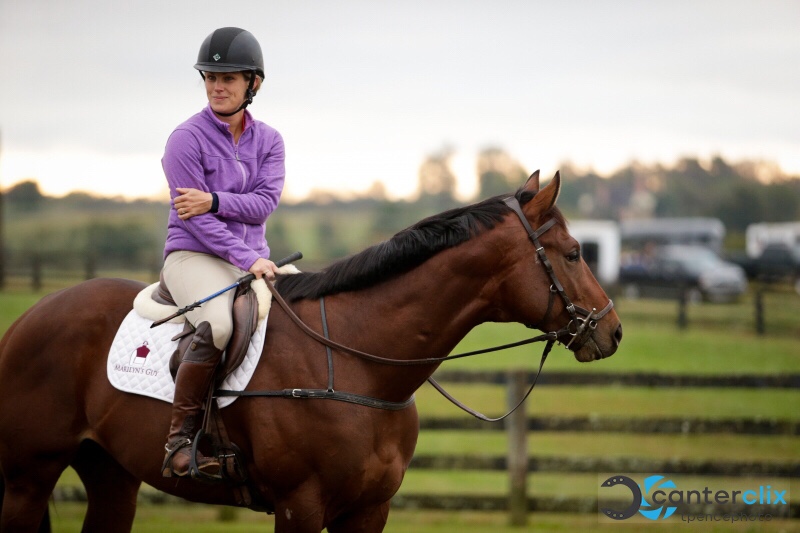
Training a horse to simply be a good horse. Photo by Taylor Pence
It is simply usability. Rideability. Trainability. Good manners and easiness to be around.
I don’t get on these horses and put them into a frame just because they look prettier in the sales pictures. I do it because it is teaching them to move off of my leg and accept contact on their mouth.
I don’t only road hack to take pictures of manicured stone walls with perky ears in between, I do it because it exposes them to being off property, seeing scary objects, and responding with the appropriate attitude.
I don’t work with the horses daily just to keep them tired, I do so because on a daily basis there is something else that they can be exposed to – whether it is at a walk or a gallop.
And I don’t ask them to learn anything that I wouldn’t expect from every horse. And this can be as simple as loading onto a trailer, or as complex as an in and out.
We as trainers or horsemen box these horses too quickly and too easily. And I admit that I have caught myself doing the same thing. I have gotten on that horse for their first ride and been sure that they will end up a hunter simply because of how they move, only to realize two months later just how far from the truth that can be as they see their first XC fence. I have watched horses move in the field and assumed they will be superb in dressage, only to realize after popping over a crossrail just how much they love jumping. And I have free jumped horses who have unlimited scope, only to watch them revolt once fillers are added and a human swings on.

Everyone thinks Mak should be a hunter…
And that is why my strategy for this crazy game of retraining these thoroughbreds is more simple. Less quarantined. More open.
Remove my expectations from the equation.
Remove my bias from the equation.
And train usable skills.
Skills as simple as calmly assessing new situations. Being ridden alone or in a group. And even ground manners.
And skills that may seem advanced or of a single discipline, but are truly applicable across the board. Moving off of the riders leg. Accepting contact. Being exposed to foreign places and foreign concepts. Adjustability.

Road hacking my eventers to increase bravery.
I am not training the horse to utilize those skills simply to be an eventer, they are just the things that I have found lead to success in eventing. But in exchange, none of these skills will take away from the training for future success in any other arena, and they all can enhance that process.
You can lengthen the stride across the diagonal in a dressage test at the preliminary level of eventing, but you also lengthen the stride of the canter as you see your distance in the hunters. You ask your horse to do shoulder-in at second level of dressage, but you also need that shoulder-in as you round the barrel of your pattern. And you ask for adjustability in the canter to put a 5 in a 6 stride line in the jumper ring, but you also constrict and contract that stride as you charge the ball in polo.
And you need a distance, a tempo, bravery, and a lead change whether you are doing hunters, jumpers, eventing, foxhunting, or anything else requiring a fence.
So no, we do not need to specify that we are training that horse to be a hunter. And in contrast, we do not need to specify that we are training them to event.
Especially not during those pivotal first few months.
Instead, we need to focus on training them for life.
Those life skills that are needed for all disciplines, and all horses. Skills that are translatable and useful.
By getting out of our own heads, out of our own worlds, and out of our own comfort zones, we can then truly put the horse first. And by putting the horse first, we open a whole new world of opportunities. These opportunities might make us feel as though we are teaching our horses more. Broadening their education and therefore both their ability in addition to their price. But at the end of the day, maybe these opportunities are truly their to train us. To open our eyes and allow us to fully understand what equestrianism is. What horsemanship is.
And when that happens, we all benefit. Us, and the horses that brought us here.

Photo by JJ Sillman.
Recent Comments